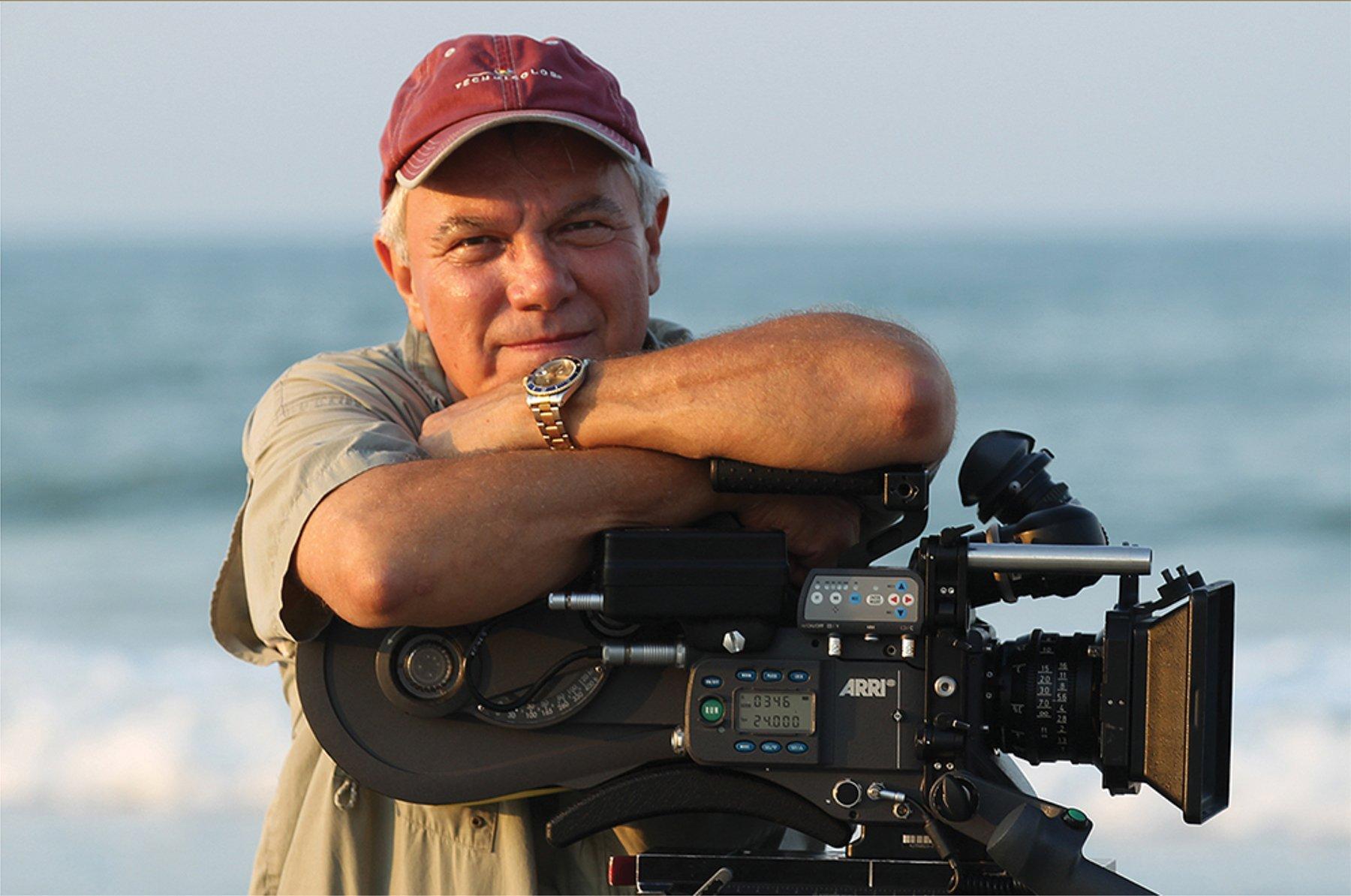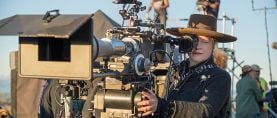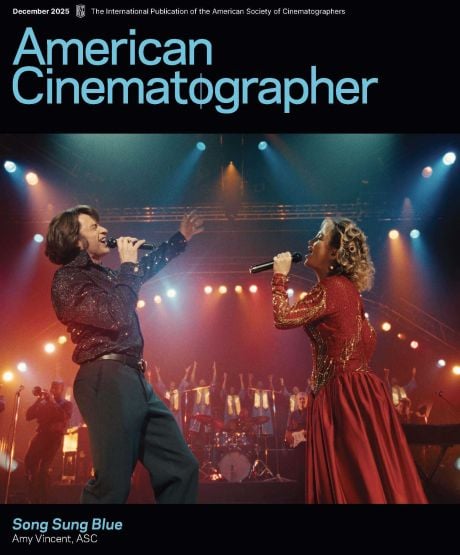
James Neihouse, ASC Honored By Giant Screen Cinema Association
The cinematographer was recognized for decades of work at the forefront of Imax photography and outer-space filmmaking, as well as his dedication to mentoring emerging talent.
The Giant Screen Cinema Association honored James Neihouse, ASC, with its Outstanding Achievement Award for contributions to the giant screen industry last week, during the GSCA’s International Conference.
Neihouse’s career spans nearly five decades, marked by groundbreaking cinematography, pioneering space filmmaking and devoted mentorship. His journey in the giant screen world began in 1977 with his work on the first Imax underwater film, Ocean, where he met Imax co-founder Graeme Ferguson. Since then, Neihouse served as director of photography on more than 35 Imax films, including The Dream Is Alive, Destiny in Space, Blue Planet, and Space Station 3D.
A key member of Imax’s space film program led by Toni Myers, Neihouse also training more than 150 NASA astronauts and 20 cosmonauts to operate Imax cameras in space.
Retired NASA astronaut Marsha Ivins, who previously honored him with a Silver Snoopy, presented the award. "He is a patient and thorough teacher, and he is my friend,” she said, remembering that they met in 1984 when her newly-selected astronaut class was in training at Homestead Air Force Base.”
Remembering that Neihouse helped make seven Imax space films involving 150 crew on 30 different flights, she said, “he not only did the ground shots needed for these films, he had to train groups of raging type-A personality. Many of them had never held a film camera before.”
She added that this training taught them to “not only be the cinematographers, but the lighting and the sound guys and the directors and the actors, all of which we would be doing without gravity and with only 10 or 15 minutes of film on board for every flight. It had to be in the first take every time. We were daunted. James was not.”
Accepting the honor, Neihouse said, “When I look at the list of past recipients here for this award, I'm really humble in their presence. Their contributions have shaped this industry, and I'm so grateful to be able to follow in their footsteps.” He cited a few include fellow 2025 Achievement Award recipient Diane Carlson of Giant Screen Cinema Consulting; and David Keighley, a long-time champion of Imax and film presentation, and an ASC Associate Member, who passed away earlier this month at age 77. “David was one of my heroes,” he said.
Neihouse also reflected on his career, thanked GSCA members and his family. Remembering his first experience with Imax, at Rubens Fleet Space Theater, San Diego, in 1975, with a film called Viva Baja, he said, “The power of those images … sparked something in me that has lasted 55 years. The sheer size and clarity of the image [created a] feeling that would transport [viewers] someplace you wouldn't normally go.”
Neihouse concluded with a heartfelt message to the close-knit GSCA community: “This award is more than personal recognition. It is really a reflection of the spirit of cooperation that defines our giant screen family, and it is a family. I share it with all of you who believe in the power of these films, to inspire and motivate audiences.”
The GSCA conference was held in two locations, starting at the Bullock Texas State History Museum in Austin, which houses the largest IMAX screen in Texas, followed by the Fort Worth Museum of Science and History and its Jane & John Justin Foundation OMNI Theater, a domed LED environment employing Cosm tech. In these venues. members were treated to some of the latest large format movies, as well as innovation sessions.
This included a preview of a camera evaluation program, recently-conducted under the auspices of the Australian Society of Cinematographers, aimed at examining the potential of various digital cameras for giant screen venues. It was presented by the GSCA Innovation Committee’s Phil Streather; Sean Phillips, ASC, who led the test; and post supervisor Nate Cohen.
The clips were lensed last May in Sydney Harbor, using the Red Raptor VV, Achtel 9×7, Sony Venice 2, and Blackmagic URSA 12K, each using a 28mm lens. A second portion of the testing, involving the Blackmagic camera, Canon EOS R5 and Nikon 28 were lensed last month in Los Angeles.
GSCA also used the occasion of its conference to pay tribute to David Keighley, who was Imax’s first-ever chief quality officer. Emceed by GSCA executive director Tammy Barrett, friends and colleagues reflected on Keighley’s life and legacy, Among them was Mike Lutz of Lutz Strategies, who called Keighley his “CSO, Chief Spiritual Officer,” remembering how Keighley taught him about cinema and the “sanctity” of the experience. “He had a fan base! How many postproduction executives have a fan base?”
He reflected, “Without David’s courage and conviction the Imax Dome laser projector may never have been made.”
Lutz also saluted David’s “superpower,” his wife and business partner Patricia Keighley. Patricia was the final speaker, noting that her husband was “someone who has helped develop technology and workflows to ensure excellent presentation quality is available in Imax theaters around the world, for some of the most prestigious documentary and Hollywood filmmakers. If you had asked David Keighley how he would like to spend the last few months of his life, as it turned out, I know screening and reporting to Chris Nolan on the dailies of his epic film The Odyssey would beat the top of his list. David was doing exactly what he has been working to do for 53 years.”






